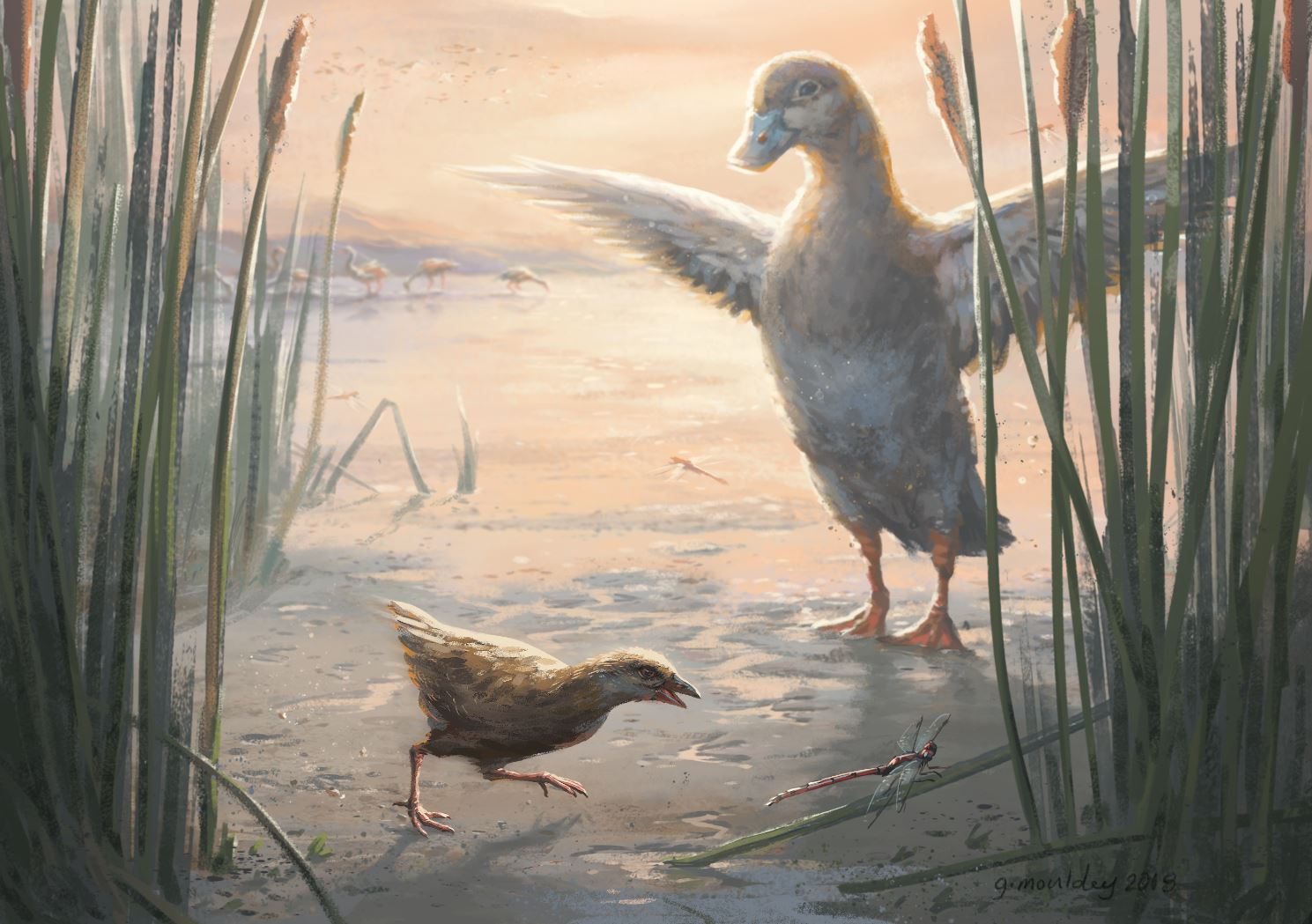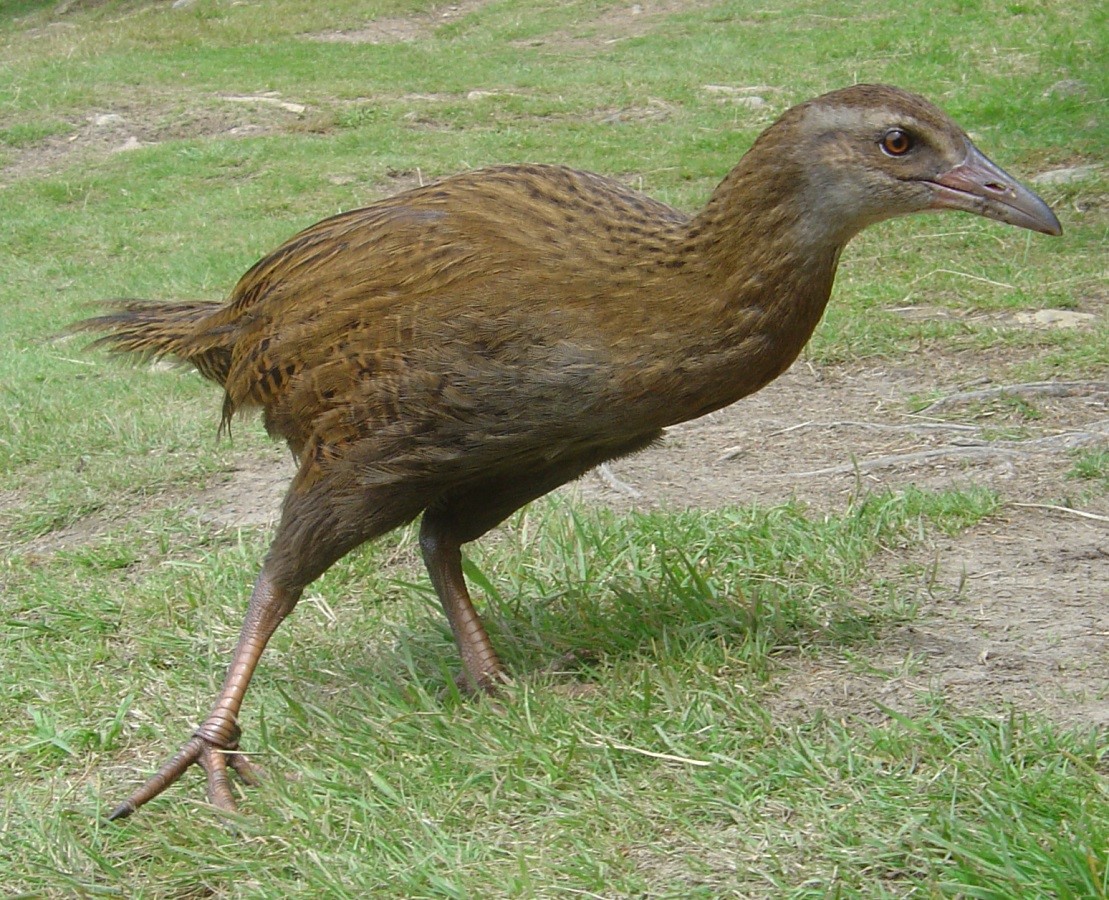
Not all prehistoric birds came in extra-large sizes. An international team of scientists has identified the fossilised bones of two new species of flightless birds of a miniscule scale.
The Flinders University-led palaeontology team discovered the fossil bones of the tiny flightless extinct ‘rail’ birds (Rallidae family) in 19 million to 16 million-year-old sediments of an ancient lake region in Central Otago on the South Island of New Zealand.
The study, by researchers from Australia and NZ, is published in the Journal of Systematic Palaeontology.
Rails include swamphens, moorhens, coots and crakes, and are common around wetlands. Many rail species can fly well and have dispersed to far-flung oceanic islands. The world’s largest rails evolved in NZ, notably the flightless takahe and weka.
Flightlessness has evolved many times in this group, more so than any other, and especially on predator-free islands, researchers say.
“Predator free environments such as remote islands have very different selective pressures compared to those with predators, usually with more focus on limitations in space and resources,” says Flinders University palaeontology PhD candidate Ellen Mather, the study’s lead author.
“As you might expect, this tends to result in unique species and faunas that occur nowhere else in the world.”
Flightless birds have been a feature of the NZ avifauna for millions of years, much longer than previously thought. They are probably the oldest flightless rails known globally.
When humans discovered New Zealand, the main islands had many flightless birds including giants within the nine species of moa, several kiwi, two huge geese, two adzebills, even some tiny wrens, and at least five flightless rails.
This new research, involving Flinders University and researchers from University of NSW, Canterbury Museum and Museum of NZ, reveal that flightless rails lived in NZ 19-16 million years before the takahe and weka evolved.
The two new species are miniscule, one barely larger than a sparrow.
At that time, a 5600 km2 mega-lake dominated the landscape of NZ’s South Island. It was surrounded by a subtropical rainforest. Plants typical of Australia and long lost from NZ, such as eucalypts, casuarinas, palms and cycads, were common.
Today traces of this giant lake are revealed in sediments around the village of St Bathans in Central Otago, NZ.
The most common of the new fossil rails is named Priscaweka parvales, meaning ancient weka with small wings, was a mere one-twentieth of the weight of a weka and was similar in size to the recently extinct Chatham rail Cabalus modestus.

Flightlessness in birds is often associated with an increase in size. The weka, which is in the same family as our fossil birds and lives in New Zealand today, is about the size of a chicken. The Banded Rail, their closest flying relative, is about half that size.
The discovery of these two miniscule flightless rails raised the question of ‘Where did they come from?’
The researchers suggest they had ancestors in Australia and had flown across the 1,500 km ocean in previous millennia. However, the new species are unlike any rail known elsewhere so their exact origin or closest relatives remain a mystery.
Dr Paul Scofield, Senior Curator Natural History at Canterbury Museum, says the new St Bathans rails join a host of other fossil birds recovered from these deposits that show NZ has long been a land of birds.
“The discovery of these two miniscule flightless rails raised the question of ‘Where did they come from?’,” says Dr Scofield who participated in the research.
The research suggests they had ancestors in Australia which flew across the 1,500 km ocean between there and NZ in previous millennia. However, the new species are unlike any rail known elsewhere so their exact origin or closest relatives remain a mystery.
“The ongoing research into the fossil birds of New Zealand builds on that begun over 150 years ago. It continues to throw up revelations into the timing and origins of major groups of birds that characterize modern avifaunas,” said Associate Professor Trevor Worthy, from the Flinders University Paleontology Laboratory.
Professor Mike Archer, from the UniNSW PANGEA Research Centre, says the latest discoveries emphasise NZ’s natural history as one of the world’s “most extraordinary engines driving bird evolution”.
“Charting how lineages like these rails have changed through time on an island that has been geographically isolated for over 80 million years will test basic presumptions made about bird evolution in general,” Professor Archer says
The new St Bathans rails join a host of other fossil birds recovered from these St Bathans deposits that show NZ has long been a land of birds.
But the St Bathans Fauna does contain small terrestrial mammals. Their relationships and behaviours are unknown, but these tiny flightless rails show that the mammals were not predators of small birds.
‘Flightless rails (Aves; Rallidae) from the early Miocene St Bathans Fauna, Otago, New Zealand’ by EK Mather, AJD Tennyson, RP Scofield, VL De Pietri, SJ Hand, M Archer, WD Handley and TH Worthy, has been published in the Journal of Systematic Palaeontology.
Video link – See some of the fossil research work at the Flinders Palaeontology Laboratory in Adelaide below

